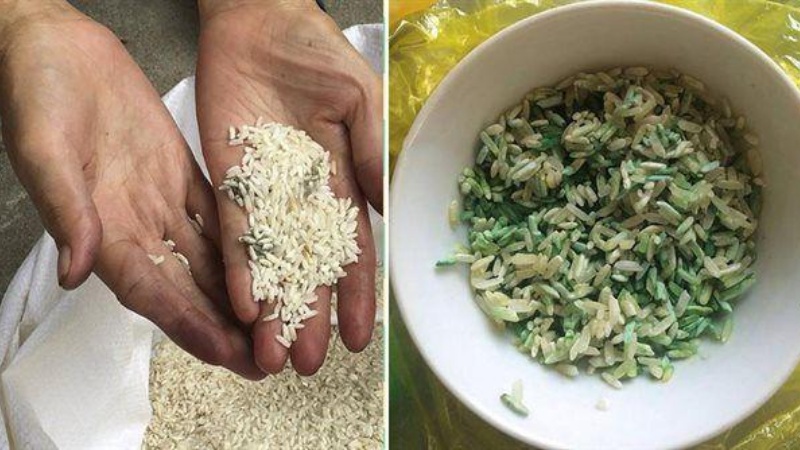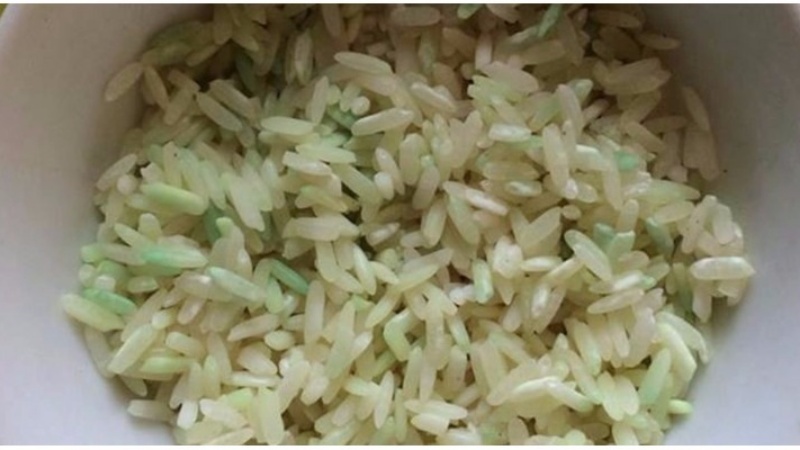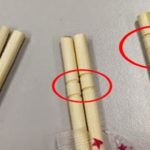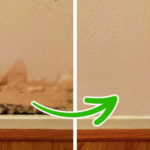1 How to Spot Moldy Rice
Good quality rice is usually aesthetically pleasing with a bright white color, while some unpolished rice varieties may appear slightly opaque.
Rice that has been exposed to moisture will exhibit a change in color from white to creamy white or yellowish, and over time, it will develop a distinct greenish tinge associated with mold.
When making rice pancakes, some households soak rice to grind it into a batter. If the soaked rice changes color after 24 hours, it indicates that the rice has started to mold, and the interaction with water accelerates the process.
 Moldy rice
Moldy rice
2 Is It Safe to Eat Moldy Rice?
Moldy rice and other moldy foods are often a breeding ground for aflatoxin – a highly toxic substance. These toxins are not destroyed by regular cooking temperatures and can only be reduced by cooking for over 30 minutes at 120°C.
Scientists from Cornell University (USA) have proven that aflatoxin causes a poisoning syndrome, leading to vomiting, abdominal pain, lung edema, convulsions, coma, and even death due to brain and heart edema, as well as fat accumulation in the liver and kidneys.
 The dangers of eating moldy rice
The dangers of eating moldy rice
3 How to Remove the Musty Smell from Rice
If only a portion of your rice has molded, don’t discard it all at once. To prevent waste, you should discard the molded portion and dry or sun-dry the remaining rice directly. After drying, transfer the rice to a bag, jar, or container and store it carefully, preventing moisture from causing mold again.
To reduce the musty smell, rinse the rice thoroughly before drying it. While this method may help reduce the odor, it is recommended not to consume moldy rice to avoid potential health risks.
 How to get rid of the musty rice smell?
How to get rid of the musty rice smell?
4 Choosing and Storing Rice to Prevent Mold
Choosing Rice
Purchase rice from reputable stores to avoid rice that has been treated with harmful chemicals, which can pose health risks to you and your family.
Rice is highly absorbent, so it’s essential to store it in airtight containers to prevent mold and insect infestations.
If you’re storing a large quantity of rice (over 30kg), use appropriately sized containers. Avoid using paint buckets or containers previously used for chemicals.
 Buy rice from reputable stores
Buy rice from reputable stores
Storage
Typically, rice stored for extended periods is susceptible to moisture and insect infestations, affecting its quality and making it unusable. However, proper storage can prevent this.
- Ensure that the containers, bags, or jars used for rice storage are completely dry and clean.
- Choose a cool, dry place for rice storage, avoiding direct contact with the ground or damp areas.
- Do not store rice in direct sunlight.
- You can also store rice in the refrigerator’s crisper drawer.
- Regularly clean the rice storage containers and include moisture-absorbing packets inside.
 Store rice in the refrigerator
Store rice in the refrigerator
Moldy rice poses significant health risks, with evidence suggesting direct links to liver cancer. Therefore, it is best to avoid consuming moldy rice or feeding it to poultry.






































